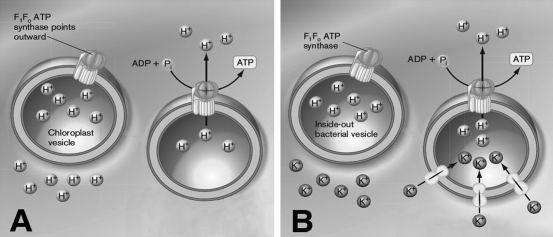Question 51
(Essay)
While testing the chemiosmotic theory, researchers prepared "inside-out" vesicles from bacterial cells, mitochondrial internal membranes, and chloroplast thylakoids. In an inside-out vesicle, the F₁ subunit of the proton-ATPase faces outward. Using the figure below, briefly discuss how the use of inside-out vesicles helped to study the relative contributions of the proton gradient (∆pH) and the membrane potential ( ) to∆ p.
 ) to∆ p. " class="answers-bank-image d-block" loading="lazy" >
) to∆ p. " class="answers-bank-image d-block" loading="lazy" >
Answer
(A) Inside-out vesicles are loaded with ...
View full Answer